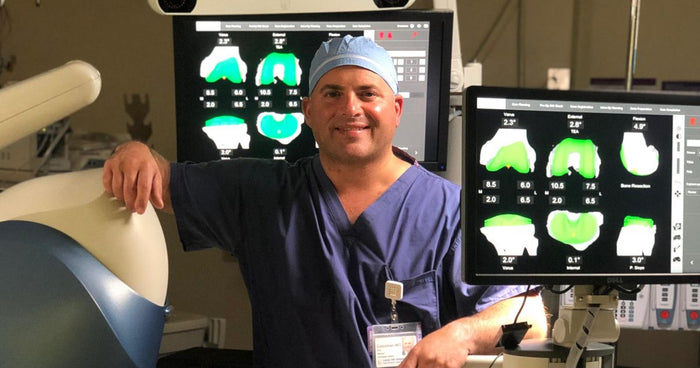Contributed by MEND partner Dr. Eric Grossman, of Rothman Institute Manhattan N.Y. A truly exceptional surgeon who goes above and beyond every step of the way to give his patients the absolute best in care. In this short blog post, he explains how robots help to increase precision in surgery.
What You Need To Know
Joint replacements are becoming one of the most common orthopedic procedures in the world. These technological advancements allow us to “outlive” the wear and tear in our joints and be mobile, active and maintain a higher quality of life as we age.
There have been numerous advancements in the field and one of the latest is Robot-Assisted Joint Replacement (RAJR). If you’re having a joint replacement procedure today at one of the leading hospitals, there’s a good chance you’re a candidate for RAJR and your doctor has recommended it for you. This brief article aims to provide you some information on what the procedure is, why it’s different and what to expect.
Robots are increasingly being used in surgery. When it comes to joint replacement procedures, robots can help to improve accuracy and outcomes. But they don’t operate alone, they simply help surgeon to do a better job. Using a robot, the surgeon can use his/her knowledge and judgement, while allowing the robot to deliver greater accuracy and precision. With the robot, the surgeon is still employing proven principles that have been shown to maximize patient outcomes and implant durability, but with enhanced accuracy in real time.
Here’s how robots are utilized:
Pre-Surgical Planning: using the latest in 3-D modeling and imaging, your doctor can be more precise about your specific anatomy to ensure the best possible size and fit for your implant.Patient scan utilizing the latest 3D technology
During Surgery: Your surgeon then references key anatomy to merge the preoperative CT scan with your knee, and creates the surgical plan. The major goals of the surgery is to align the knee such that the implants are evenly stressed, the appropriate amount of bone is resected, and the ligaments are symmetrically tensioned all in an effort to re-create a “life like” feel to the knee. All of these plans are made prior to any actual bone is removed with the assistance of the robotic software and surgeon data inputs. Once the plan is accepted, it is put into action utilizing the surgeon controlled robotic arm. The robotic arm will not allow the surgeon to go out of the specific position and this vastly improves accuracy, some studies suggest that it increases accuracy by three hundred percent.

I am routinely amazed at how all portions of the robotic cases are reproducibly executed with increased precision and surgeon control amounting to what I believe is a more reproducible and life-like feeling knee.
And some of the benefits:
The data on the use of RAJR suggest that it lowers the risk of complications and failure. The accuracy helps to remove the diseased or problematic bone while preserving the health of the surrounding bone and tissues.
And because of the higher precision and ability to fit to a patient’s individual anatomy, this type of procedure also may improve healing and recovery times. This allows patients to get back to feeling better faster and allows for return to activity faster.
What it means for you:
If you’re having a robotic-assisted joint replacement procedure, just remember that your doctor is still in charge and is the one doing the surgery using all his/her years of experience and judgement. He/she is simply using the robot to improve precision being more accurate with the use of technology. You can have greater confidence knowing that with this type of procedure, you may increase the likelihood of faster recovery and better overall outcomes.



